After a decade of floundering in stormy seas, Ubisoft’s grand pirate epic, Skull and Bones, finally saw the light of day a few weeks back.
Since development began in 2013 following the success of Assassin’s Creed IV Black Flag’s naval battles, the game has weathered stormy seas and a multitude of challenges, including changing game concepts as well as the pandemic.
Skull and Bones is a co-op pirate open-world action game developed by Ubisoft Singapore as the lead studio, which is a major source of pride for me. Back in 2018 when we visited Ubisoft’s Singapore Studio, Skull and Bones was in development, with character and location concepts being showcased, as well as the realistic sea and water effects,
But how does the final game pan out after a decade of development and enduring the winds of change?
Masters of the sea
Skull and Bones is set in the Indian Ocean during the 17th century, when the strongest navies rule the seas. You play a shipwrecked pirate on a humble and tiny dhow with a skeleton crew, seeking the way to the pirate den of Sainte Anne, which serves as your first base of operations.
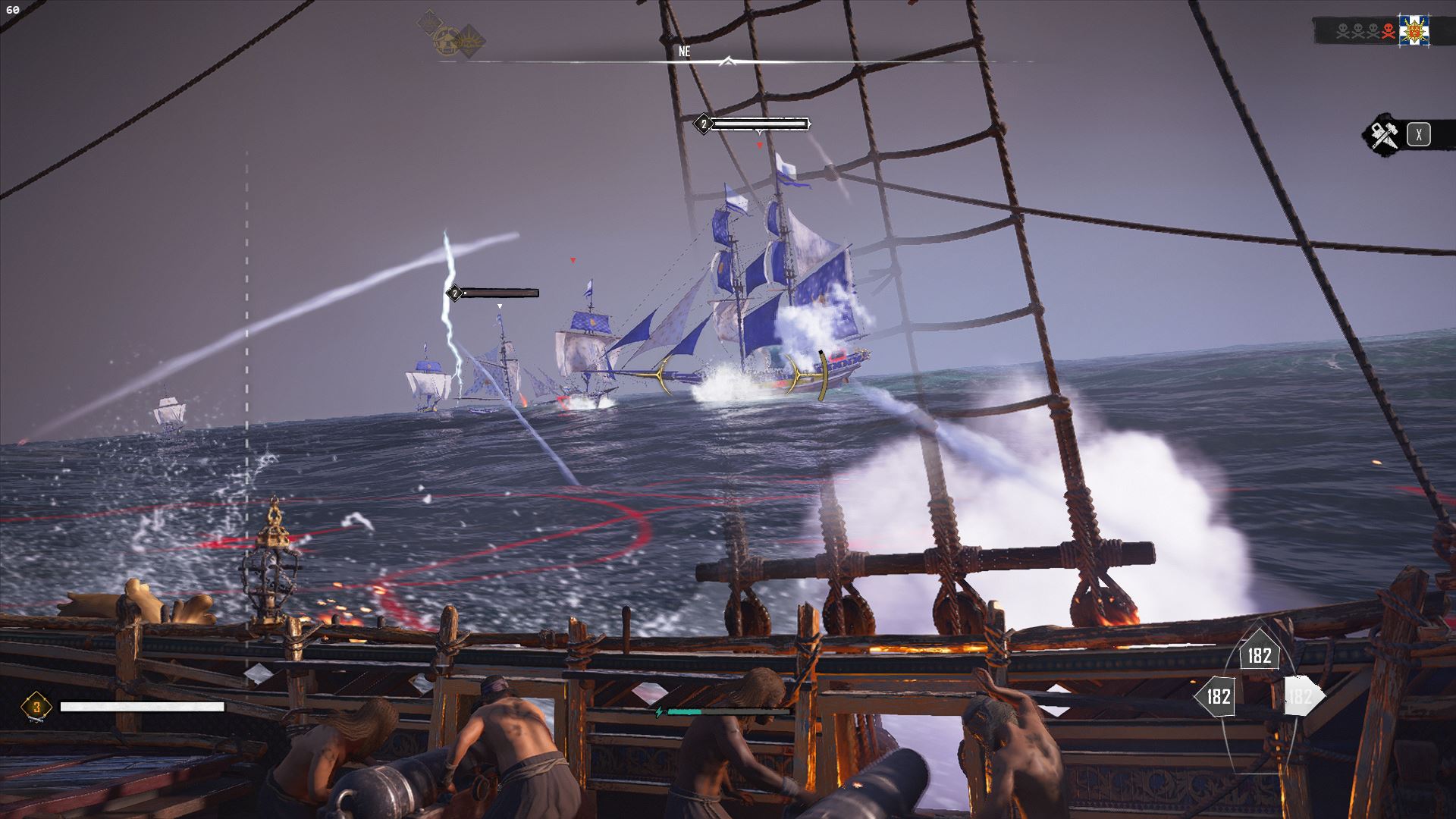
The main story campaign puts you in servitude to the Kingpin of Sainte Anne, Captain John Scurlock, in his paranoid crusade for power. As you complete missions for Kingpins such as Scurlock and other non-playable characters (NPCs), you gain Infamy points which advance you in the ranks until you become a Kingpin yourself.
Skull and Bones focuses mainly on naval combat, gaining infamy and earning money in order to upgrade your ships for a more favourable outcome during naval battles.
There are also plenty of places to explore, from the coast of Africa to the islands of Southeast Asia, from actual places inspired by history to mythical and fantastical events that offer a varied exploration experience.
Managing your ship in Skull and Bones requires you to watch the crew’s stamina bar, which you can replenish by feeding them food, and also the wind direction and strength. This can severely affect your ship’s ability to move away from harm.
As Skull and Bones is a live service online game, you get to meet players across platforms and play with or against them for certain in-game events. You can invite other players to join you in completing certain tasks, or call for help if you are having trouble, or form your own guild and master the waves together.
There are scant RPG (role-playing game) elements, where you can customise your ship and dress up your character in the finest pirate garb, but your fleet of ships play as the main character rather than the skipper.
You can upgrade your ship’s armour and three weapons on the front and the sides. Skull and Bones offer a wide variety of ship weapons, including artillery, torpedo and ballista, which offers you a choice in your combat tactics.
You also need to change ships for fulfilling certain contracts, such as the unarmed dhow where you use your spear to hunt animals in the river such as crocodiles and hippos.
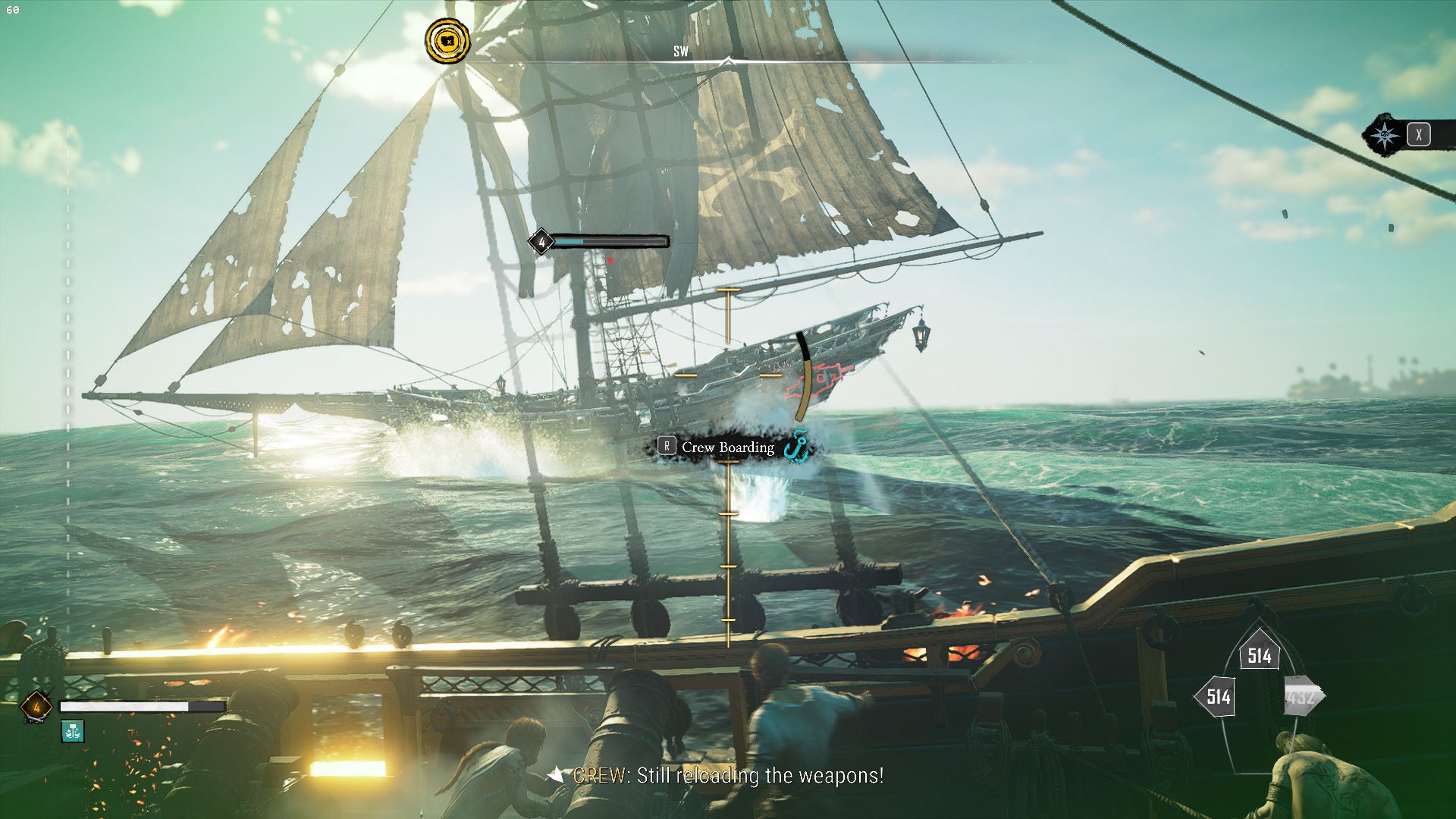
Skull and Bones begs comparison to its parent, the single player game, Assassin’s Creed IV Black Flag, as well as the live service Sea of Thieves, with very similar naval battle gameplay. However, the experience feels quite different from Black Flag, almost like it is more dumbed down.
For instance, when boarding an enemy ship in Skull and Bones, you simply have to steer near to a damaged enemy ship, hit a button to grapple the ship and loot will be dispensed to you once successful.
Unlike Black Flag, there is no swashbuckling action in the form of hand-to-hand combat on the enemy ship, so it feels a little anti-climactic. The good thing is that you can have a fleet of different ships that you can pick for certain missions, and outfit them differently, as compared to only one ship in Black Flag.
Skull and Bones is similar to Sea of Thieves as an open-world live service game, but is a lot less dangerous, as player versus player (PvP) events are off by default and require you to join specifically before PvP is triggered.
Various modes such as Hostile Takeovers, Legendary Heists and a “Capture the flag”-type of gameplay are offered during different timed events. Unlike Sea of Thieves, you don’t have to worry about other players attacking your ship and stealing your hard-earned loot constantly.
If your ship is destroyed, all your cargo will be dropped on the spot where your ship sank, and you can either respawn at a price or at the last port where you docked at for free.
To retrieve your dropped loot, you will have to travel there quickly before someone else picks it up. I was most motivated to loot and plunder when my underpowered ship was destroyed by a sea monster repeatedly and lost my precious cargo.
“Eh, you want to set sail or not?”
I felt pretty proud to see that Skull and Bones is led by the Ubisoft Singapore studio, and included some very Singaporean influences in-game.
It was thrilling to hear the first mate, Asnah Yatim, speak with a Singaporean accent and even use words like barang-barang (meaning “items” or “stuff”) and sayang (a term of endearment). She even uses Singlish terms like “Eh, you want to set sail or not?”, which I find amusing.
Sure, the dialogue sounds akin to Phua Chu Kang or Masters of the Sea (yes, there was even a line that goes “crush you like a cockroach”) but how often do we get that featured in triple A games?
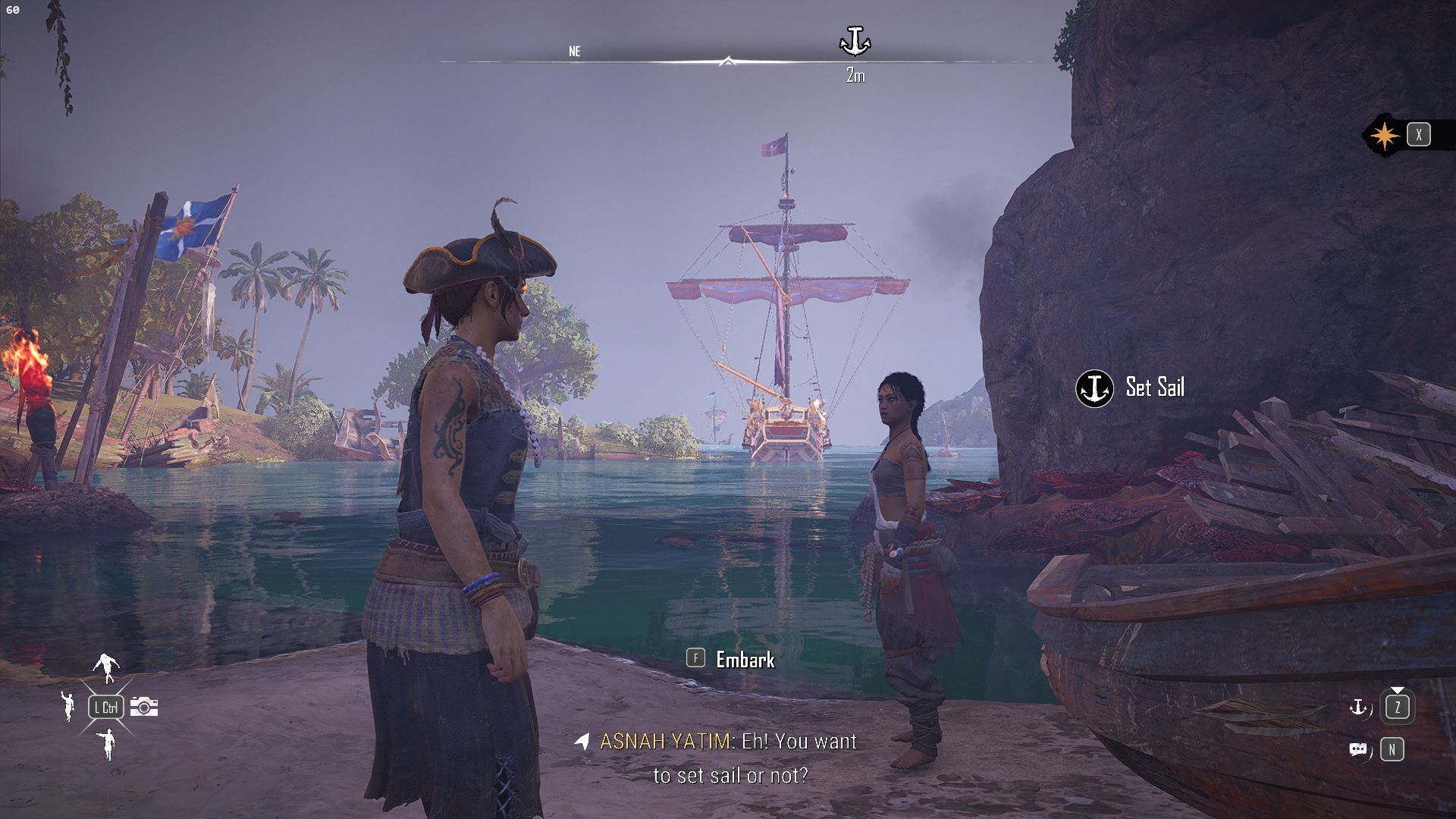
The crew also sings sea shanties in Malay, which is pretty refreshing since there are so few games based in this part of the world. Other characters feature African, British, French and Indian accents, which add a nice variety to the game’s atmosphere.
Another local touch is the inclusion of Southeast Asian foods like sate kambing (mutton satay) and durian that you can feed to your crew to boost their stamina.
Grind, grind, grind your boat
Unfortunately, once the novelty wears off, there is little to sustain interest in the game, apart from upgrading your ships and taking on stronger foes either by yourself or with others online.
Other than the epic naval battles, I felt the multitude of tasks dished out by the NPCs are rather repetitive and grindy. Most of the contracts are repetitive and involve the same activities – I actually thought I had finished several very similar ones fighting the same enemies or searching for the same commodities.
Annoyingly, there is a limit to how many contracts you can accept at one time, so it forces you to be selective and focus on those that bring you the most benefits. The main story missions are a bit more interesting, involving some double crossing and duplicity.
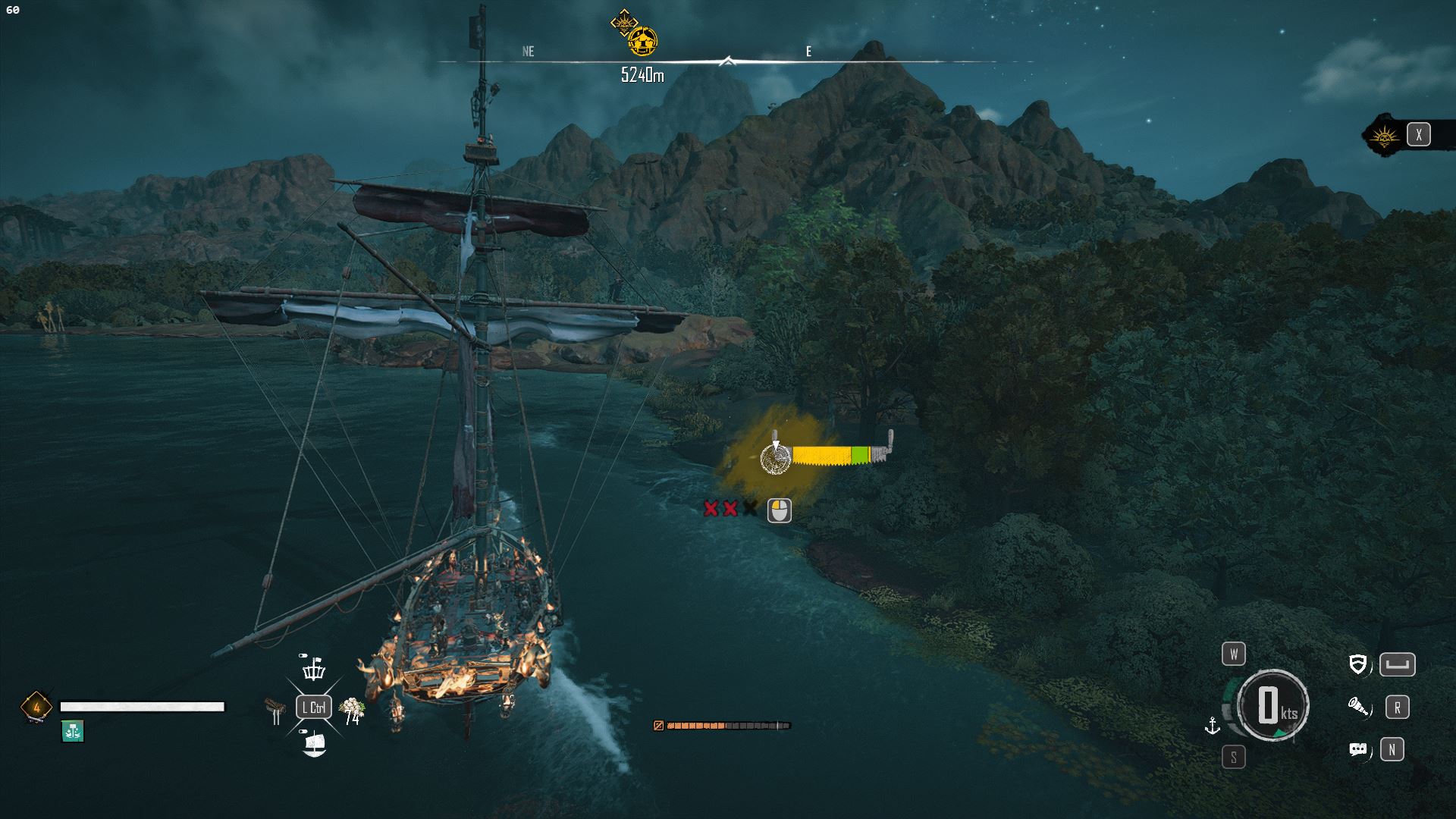
If you feel seasick from the sea-faring action, there is some opportunity for land exploration. This is limited to a small area at outposts which you can unlock for future fast travel (at a price), and where your ship can dock.
You can wander on foot, pick up some loot, find hidden treasures and speak to some NPCs for more contracts and trades. But before you unlock the outposts, the long sailing time across the seas can be a drag.
Another grindy aspect of the game is finding resources to upgrade your ship by harvesting, looting or trading. As you sail around, you can loot shipwrecks, harvest timber and fibres, or mine ores.
These actions require captain’s tools of different levels, which require you to rise up the ranks in order to obtain better tools and unlock new resources.
I did encounter some glitches especially during the first few days of launch, but not as many as I expected. One persistent issue is the quitting screen freezing up on several occasions, forcing me to force close and restart.
In another strange encounter, the merchants at the main pirate den disappeared and were unable to render services when I was about to start building a new ship. Force-closing and restarting the game solved the issue.
See the sea view
The animation and visuals of the waters in Skull and Bones are simply stunning, with the sea looking and behaving differently in the varied weather conditions and time of the day, as well as the different environments such as rivers, beaches and deep oceans.
Sadly, your character can wade a little but is not able to swim, so there is no chance to dive into the sea to explore sunken wrecks or take a dip in the beautiful waters.
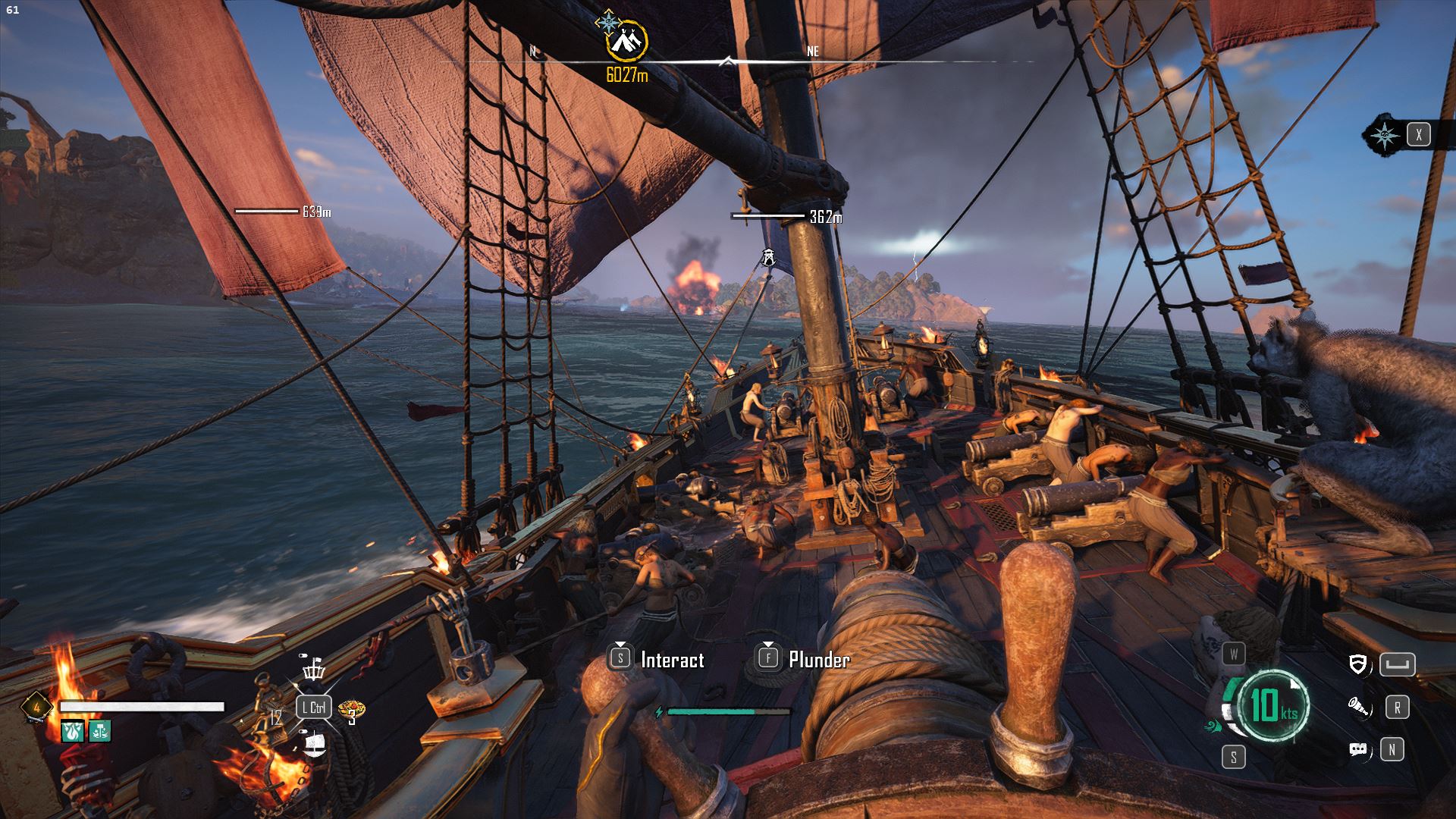
One under-appreciated visual is the detailed animation of the crew onboard your ship as well as your pet. Unfortunately, the deck view makes steering difficult, so there isn’t much opportunity to appreciate it unless it is during a leisurely sail.
There also isn’t a cruise mode that lets you relax and enjoy the view, so you always have to be helming the ship when you are on the move.
A big plus for Skull and Bones is that expanded gameplay in the form of Seasons is free. The first season, Raging Tides, was just introduced two weeks after the game’s launch, and comes with new content each week.
Raging Tides introduces a villainous pirate boss Philippe La Peste and his green-tinted crew, as well as a rather promising Smuggler’s Network that works like a Battle Pass that lets you earn tiered rewards.
TL;DR
Skull and Bones offers some satisfaction in completing contracts, sinking an enemy fleet, making loads of money and outfitting your ship, but the repetitive quests and grindy career progression gives little motivation to keep playing.
Good news is, you can try the game for free before buying, so why not give it a go first? With Season 1: Raging Tides just starting, it might be a good time to get your feet wet.
Skull and Bones is available at S$79.90 for the Standard Edition (PC) on Ubisoft Store, S$98.25 on the Xbox Series X|S, and S$98.80 on the PlayStation 5.






